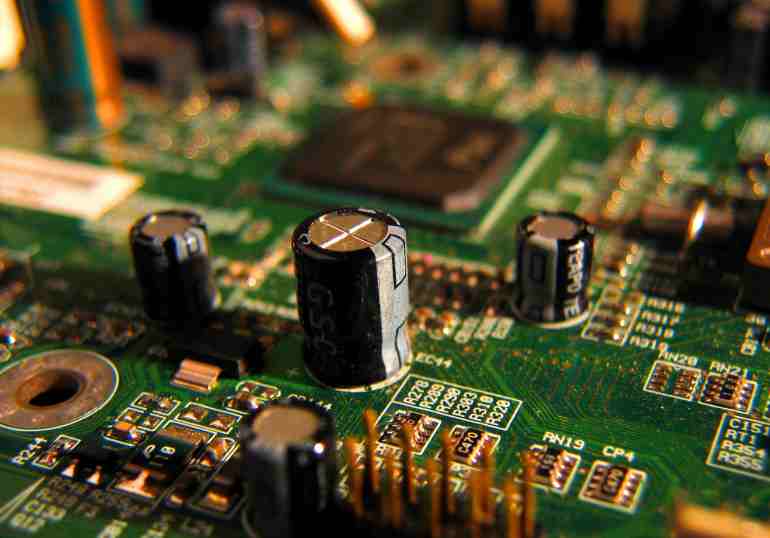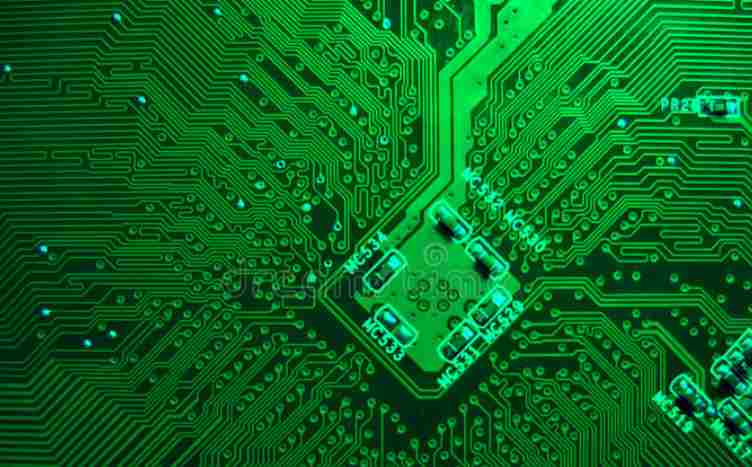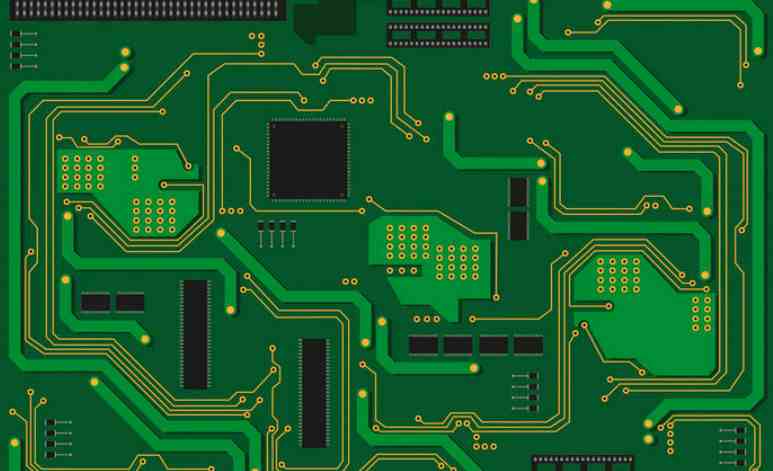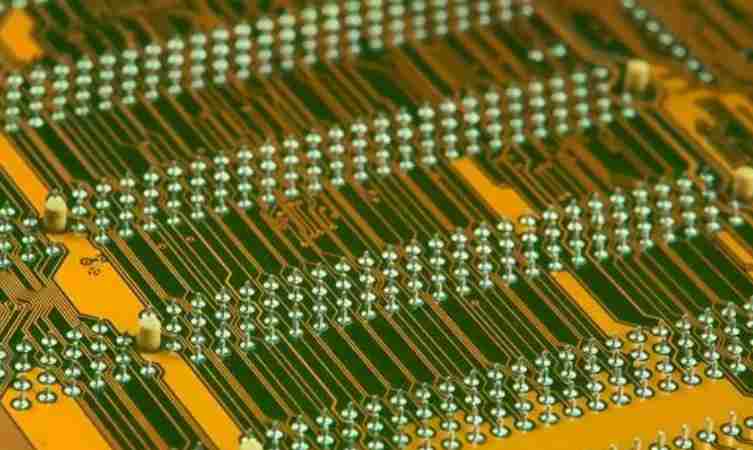
Example 2.1 electric field shield the 2.1.1 electric RongJian coupling electric field shielding mechanism of distribution
1) Increase the distance between A and B.
2) B As close to the ground floor as possible.
3) Insert metal shielding plate between A and B.
2.1.2 Key points of electric field shield design:
1) shielding plate program-controlled protected material; The shield plate must be properly grounded.
2) Pay attention to the shape of the shield plate.
3) The shield plate is good with good conductor, thickness is not required, the strength should be enough.
2.2 Magnetic Field Shielding
2.2.1 Mechanism of magnetic field shielding
The low reluctance of the high permeability material plays the role of magnetic shunt, so that the magnetic field in the shield is greatly reduced.
2.2.2 Key points of magnetic shield design
1) Select materials with high permeability.
2) Increase the wall thickness of the shield.
3) The shielded object does not rely on the shielded body.
4) Pay attention to structural design.
5) Double layer magnetic shield for strong use.
2.3 Mechanism of electromagnetic shielding
1) Surface reflection.
2) Absorption inside the shield.
2.3.2 Effect of materials on electromagnetic shielding
2.4 Actual electromagnetic shielding
Vii. Electromagnetic compatibility design inside the product
Electromagnetic compatibility in printed circuit board design
1.1 The common impedance coupling problem in printed circuit boards is separated digitally from analog, and the ground wire is widened.
1.2
1.2 Layout of printed circuit boards
※ For high speed, medium speed and low speed mixed use, pay attention to different layout areas.
※ The low analog circuit and digital logic should be separated.
1.3 Wiring for the printed Circuit Board (single or double panel)
※ Special zero-volt wire, the width of the power cord is ≥1mm.
※ The power cord and ground should be as close as possible, and the power supply on the whole printing board should be distributed in a "well" shape with the ground, so that the current of the distribution line can reach a balance.
※ A special zero-volt wire should be provided for analog circuits.
※ In order to reduce cross-talk between lines, the distance between printing lines can be increased if necessary, and some zero-volt lines are placed as line isolation.
※ The plug of the printed circuit should also arrange some zero-volt lines as line isolation.
※ Pay special attention to the size of wire loop in current circulation.
※ If possible, R-C decoupling is added at the inlet of the control line (on the printing plate) to eliminate possible interference factors in transmission.
※ The line width on the printing arc should not change, and the wire should not turn suddenly (≥90 degrees).
1.4 Useful suggestions for the use of logic circuits on printed circuit boards
※ Anyone who can use high-speed logic circuit does not.
※ Add a decoupling capacitor between the power supply and the ground.
※ Note waveform distortion in long line transmission.
※ The buffer between button and electronic circuit triggered by R-S.
1.4.1 Power line interference and suppression methods introduced when the logic circuit is working
1.4.2 Distortion of logic circuit output waveform transmission
1.4.3 Coordination between button operation and electronic circuit work
1.5 The interconnection of printed circuit boards is mainly cross-talk between wires. The influencing factors are as follows:
※ Route cables at right angles
※ Shielding cable
※ Impedance matching
※ Long line drive
Electromagnetic compatibility in switching power supply design
2.1 Disturbance and inhibition of switching power supply on grid conduction
Sources of harassment:
① Nonlinear flow.
② The conduction-common-mode noise generated by the radiant coupling between the power transistor shell and the radiator in the primary circuit is generated at the power input.
Inhibition methods:
① The switching voltage waveform is "trimmed".
② An insulation gasket with a shielding layer is installed between the transistor and the radiator.
③ Connect the power filter in the mains input circuit.
2.2 Radiation disturbance and suppression of switching power supply
Pay attention to radiation disturbance and inhibition
Inhibition methods:
① Reduce the area of loop as much as possible.
② Layout of positive load current conductor on printed circuit board.
③ A soft recovery diode is used in the secondary rectifier loop or a polyester film capacitor is connected in parallel to the diode.
(4) The waveform of the transistor switch is "trimmed".
2.3 Reduction of output noise
The reason is diode reverse current steep and loop distribution inductance. The diode junction capacitance forms high-frequency attenuation oscillation, and the equivalent series inductance of the filter capacitor weakens the function of the filter. Therefore, the solution to the occurrence of peak interference in the output wave changing is to add small inductance and high frequency capacitance.
3 Cabling inside the device
3.1 Phenomenon of electromagnetic coupling between lines and suppression methods
Coupling to the magnetic field:
① The best way to reduce the interference and the loop area of the sensitive circuit is to use twisted pair wire and shield wire.
② Increase the distance between lines (to reduce mutual inductance).
(3) As far as possible, the interference source line and the induced line are wired at right angles.
For capacitive coupling:
① Increase the distance between lines.
② Grounding of the shield layer.
③ Reduce the input impedance of the sensitive line.
(4) If it is possible to use a balanced line as input in the sensitive circuit, use the inherent common mode suppression ability of the balanced line to overcome the interference of interference sources to the sensitive line.
3.2 General wiring method:
According to the power classification, the wires of different categories should be bundled separately, and the distance between the wiring harnesses should be 50 to 75mm.

4 Grounding the shielded cable
4.1 Common Cables
※ Twisted pair is very effective for use below 100KHz, limited by uneven characteristic impedance and resulting waveform reflection at high frequencies.
※ With shielded twisted pair, signal current flows in the two inner wires, noise current flows in the shield layer, thus eliminating the coupling of the common impedance, and any interference will be induced to both wires at the same time, so that the noise cancellation.
※ The ability of unshielded twisted pair to resist electrostatic coupling is poor. But it's still good for preventing magnetic field induction. The shielding effect of unshielded twisted pair is proportional to the number of twists per unit length of wire.
※ Coaxial cable has more uniform characteristic impedance and lower loss, so that from true flow to very high frequency has better characteristics.
※ Strip cable without shield.
The best way to connect is to phase the signal with the ground wire, the second method is a root, two signals and then a root in turn, or a dedicated grounding plate.
4.2 Grounding of cable shielding layer
In short, it is not appropriate to ground the load directly, because the grounded shielding layer at both ends provides a shunt for the magnetically induced ground loop current, which degrades the magnetic field shielding performance.
4.3 Cable termination method
In high demand, the inner conductor should be provided with a full 360° wrap, and a coaxial connector is used to ensure the integrity of the electric field shield.
Electrostatic discharge can enter electronic circuit through direct conduction, capacitive coupling and inductive coupling.
Direct electrostatic discharge to the circuit often leads to circuit damage, the discharge to the adjacent object through capacitive or inductive coupling, will affect the stability of the circuit.
Protection method:
① Establish a perfect shielding structure, metal shielding shell with ground can release the discharge current to the ground.
② The grounding of the metal case can limit the rise of the potential of the case, resulting in the discharge between the internal circuit and the case.
(3) If the internal circuit is connected with the metal shell, it should be grounded with a single point to prevent the discharge current from flowing through the internal circuit.
(4) Add protective devices at the cable entrance.
⑤ Add a protection ring at the printing plate entrance (the ring is connected with the grounding end).
6 Handle switch contacts inside the device
6.1 Transient interference is formed during switch disconnection
6.2 Interference suppression measures
6.2.1 Processing the switched inductive load
6.2.2 Handling Switch Contacts







